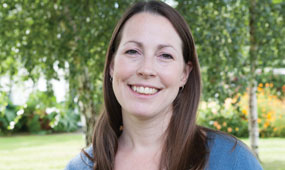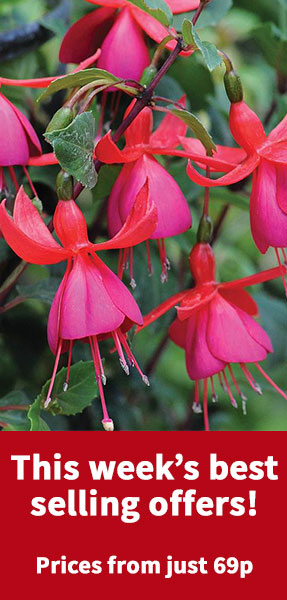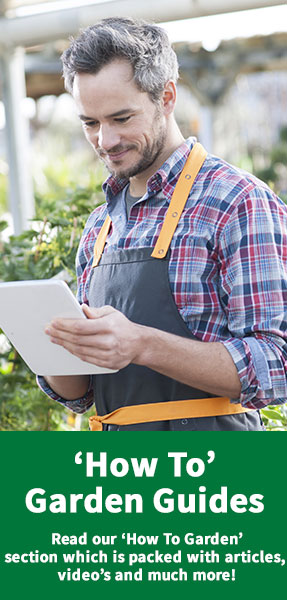How to grow your plants
Whether your plants are delivered as bareroots, bulbs or plugs, you can follow our step by step guides to get your plants off to the best possible start.
If you would like to know more about our product specifications, view our How we grow and send your plants information page.
For more specific growing instructions please visit the individual product pages.
Growing Plug Plants
Open your plug plants immediately on arrival. For the best start they should be potted up as soon as possible. Pot them up into individual pots using a good quality potting compost and water them thoroughly. Grow them on in bright frost free conditions until they are large enough to plant outdoors. Prior to planting out in the garden, your plants should be acclimatised to outdoor conditions in a sheltered spot over 7 - 10 days.
Growing Bulbs and Tubers
If your bulbs and tubers can’t be planted immediately, open the packaging and store them in a cool, dry, frost free place until planting becomes possible. You can plant bulbs in containers or directly into the ground. However, Begonia tubers will always need to be started off in pots indoors. Most bulbs and tubers will enjoy a fertile, well drained soil. The recommended planting depth will vary between species; but as a rule of thumb most bulbs can be planted at 3 times their own depth. Cyclamen and Begonias are exceptions to this rule and should be planted just at the soil surface. Water sparingly after planting.
Growing Potted Shrubs and Perennials
Our potted plants can be transplanted into larger pots and grown on, or planted out in their final positions. Prior to planting in the garden, you will need to acclimatise them to outdoor conditions in a sheltered spot over a period of 7 to 10 days. Prepare a planting hole wide enough to accommodate the rootball and deep enough to ensure that the soil of the potted plant sits at ground level. Gently firm the plant into the ground leaving a slight depression around the plant - this will help to direct water towards the roots. Water your plant well to settle the soil.
Growing Bareroot Perennials
If your bareroot perennials can’t be planted immediately, open the the packaging and store them in a cool, frost free place. If the delay in planting will be longer than a week then bareroots should be potted up and grown on in a cold frame, greenhouse or sheltered spot outdoors for planting out at a later date. Prepare a planting hole wide enough to accommodate the roots when they are spread out, and deep enough that the crown of the plant is just a few cm below soil level. Backfill the hole with soil and firm the plant in gently. Iris rhizomes are the exception to this rule and should be planted so that the rhizomes sit at ground level.
Growing Bareroot Trees and Shrubs
If your bareroot trees and shrubs can’t be planted immediately, remove the packaging and store them in a cool, frost free place. Before planting, soak the roots in tepid water for a couple of hours to rehydrate them. Prepare a planting hole that is wide enough to accommodate the roots when they are fully spread out. A soil mark is often visible on the stem, indicating the original planting depth at the nursery. Plant your tree or shrub so that this mark sits at soil level. If this is not obvious, then plant it so that the top of the root system sits just below ground level. Firm the soil around the roots and water well.
Quick guide:
How do you grow plug plants?
Open plug plants immediately, pot them up into individual pots and water thoroughly. Grow on in bright, frost free conditions until large enough to plant outdoors. Acclimatise for 7-10 days before planting out.
How do you grow begonia tubers?
Start begonia tubers off in pots indoors. They enjoy fertile, well drained soil and should be planted just at the soil surface. Water sparingly after planting.
How do you grow bareroot perennials?
Prepare a planting hole wide enough for the roots when they are spread out, and deep enough that the crown of the plant is just a few cm below soil level. Backfill the hole with soil and firm the plant in gently.

Written by: Sue Sanderson
Plants and gardens have always been a big part of my life. I can remember helping my Dad to prick out seedlings, even before I could see over the top of the potting bench. As an adult, I trained at Writtle College where I received my degree, BSc. (Hons) Horticulture. After working in a specialist plantsman's nursery, and later, as a consulting arboriculturalist, I joined Thompson & Morgan in 2008. Initially looking after the grounds and coordinating the plant trials, I now support the web team offering horticultural advice online.Sign Up For Exclusive Special Offers




© 2025 Thompson & Morgan. All rights reserved. A division of Branded Garden Products Limited.





